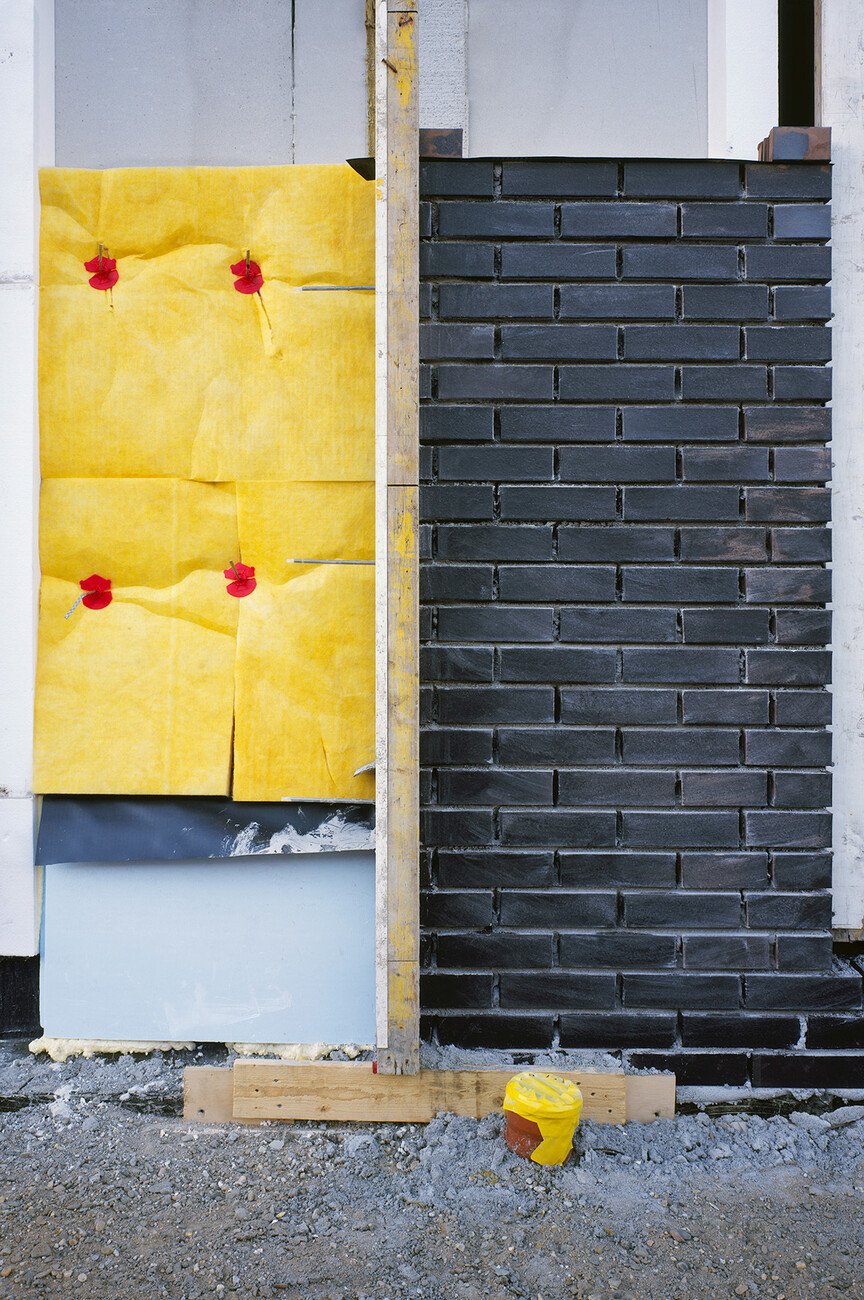Transcending boundaries
“The art is already there,” says Ulrich Hensel. Instead of creating compositions, he goes looking for them. He seeks to discover what kinds of images human activities related to urban development bring forth. However, even if these images already exist, it can be a challenge to discern them among the white static of everyday life. To choose the right section, the one in which the seemingly banal imagery is turned into something special. For over 30 years now the Düsseldorf-based creative has been pursuing his art ion large constructions sites. In his “Zwischenwelten” or interstices he shows temporary vestiges of a nascent architecture. He uses an analogue plate camera to capture these and stage his concept. Little by little he lifts his chosen sections of reality out of their urban context and into the museum. Thus reframed, his fragments are placed in the public eye for close scrutiny. Ulrich Hensel isn’t handed his motifs on a plate. His work requires a great deal of patience, a keen eye and a little bit of luck. “I have no hard and fast rules when it comes to what makes a scene interesting for me,” Hensel comments. It is the “part in-between”, the process, that is crucial to him. In order to capture this process and condense the overarching procedure into a single detail, he employs the same method in every instance. He gets into his car, drives through cities such as Düsseldorf, Ghent, Wuppertal or Cologne, from one large construction site to the next. Wanders along site fences and gazes into excavation pits. Asks site supervisors for access to the art. In all the sites he visits, what his chosen sections have in common is that they arouse a feeling in him, one that could otherwise be stirred by a painting. There is a stage-like presence, always centered on an object, mostly a functional item. Every moment is unique and irretrievable; he singles out the section with his eyes to begin with.
Ulrich Hensel’s photographs are not of a documentary nature. Despite lacking a vanishing point they exert a powerful pull on the viewer’s gaze, dragging us into the open heart of the shell structures. Into the many details and loose ends that, tied together, are soon to form a homogenous whole. The collage, made up of prosaic building material and surprising colorful accents, of insulation, reinforcement steel and markings in brightly glowing neon spray paint, is grounded in churned up earth. It is a cosmos that constantly gives rise to new connections. In which layers are formed out of segments and provisional arrangements, their hierarchies constantly shifting as he takes his pictures, and continuing to shift after he leaves. Their final status remains unknown. The viewer tends to look for constants in these puzzles, wanting to comprehend Hensel’s images through categorization. Yet even as one thinks to have recognized in them similarities to the works of famous master painters of yesteryear, the images nevertheless decidedly stand on their own, refusing to be ranked in the ostensible certainty of what we have already encountered. We do not require an art historical context in order to experience the pictorial force and depth of these images, these sections lifted from a greater context by the artist. Ulrich Hensel does not mimic painting, he neither pays homage to existing works nor deconstructs them. Instead using his camera he simulates the painterly touch. In doing so, he reflects a contemporary social development, namely the shift towards the camera as our preferred means of expression, towards our curation of selected moments in the interest of producing a desired reading of larger contexts. “Today we live in an unprecedented duplexity,” he suggests. His choice of large-format film facilitates the intense experience his photography has to offer, with his works often approaching the very dimensions of the construction site scenes they depict. Hensel does not edit his photographs, but merely ensures the lighting conditions are right for him when he takes the picture. “What happens after the discovery of the theme up until the exhibition is like a levelling, at that point the crucial moment has already passed,” Hensel reports.
In his current photographs Ulrich Hensel has left the dynamic chaos of building pits behind for the time being in order to explore the organized operation being implemented inside the emerging architecture – when the structure has already been erected and the focus is placed on completing the technical framework required for future building services. The artist shows us structured sculptures made up of supply lines with a cold glow, strands of cables, and heating pipes shortly before they disappear behind paneling or under the foundations. “A technoid, inorganic forest, a piece of the future,” is how he puts it. In his works Hensel dissolves boundaries between art forms, between photography and painting, between image and simulacrum. Each shows a unique moment in the process of construction. His is an art lifted directly from life, as fragmentary as existence itself.
Ulrich Hensel “Zwischenwelten”
Until 8 November 2020
Kunstmuseum Wolfsburg
Hollerplatz 1
38440 Wolfsburg










